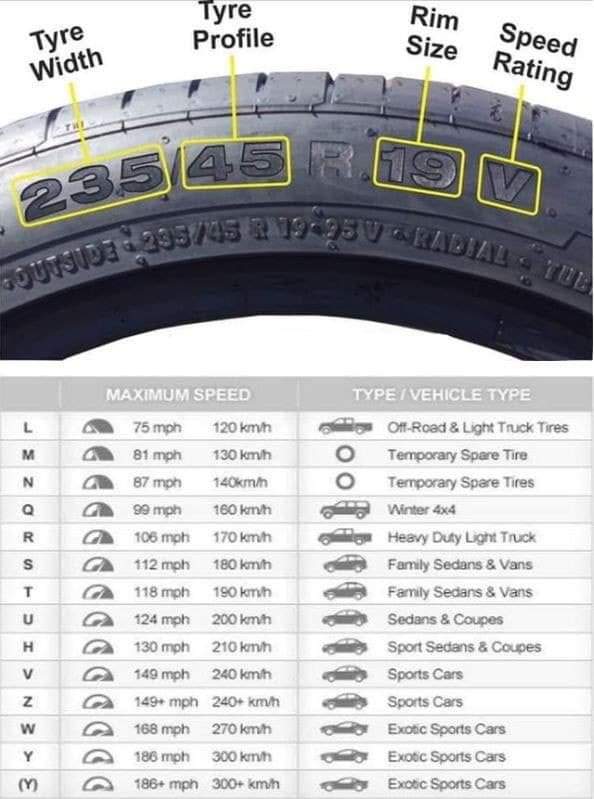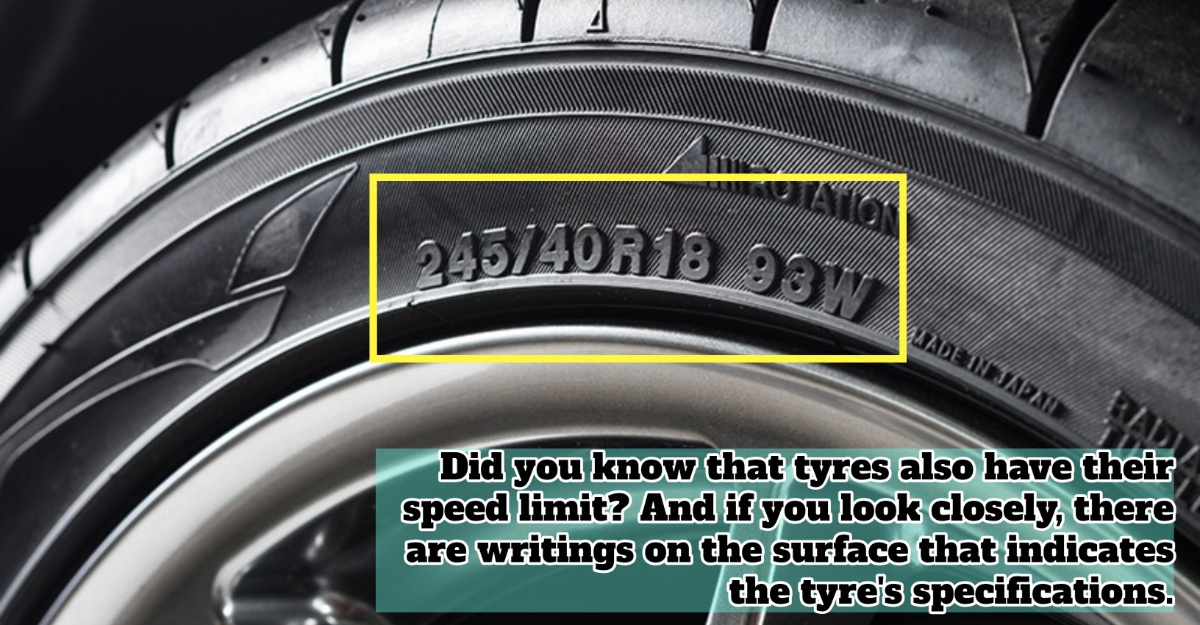Did you know that tyres also have their speed limit? And if you look closely, there are writings on the surface that indicates the tyre’s specifications. However, don’t be mistaken. There are plenty of labels on the tyre. But the one that shows the tyre’s ‘identity’ is the picture provided by Aid Fawzal (@AidFawzal) on Twitter.

However, what do these numbers mean? Let’s learn together.
1) The first three numbers
- These numbers are the tyre’s width.
- It’s measured by millimetres (mm).
- For instance, the tyre’s width is 235 mm.
2) Next two numbers are the tyre’s profile
- The number indicates the tyre’s sidewall height.
- Next, the value written in percentage is the tyre’s width.
- For example, 45% of 235 mm = 0.45 x 235 mm = 105.75 mm tall.
3) The number after R (or r)
- R means the tyre is a ‘radial’ built.
- Then, 19 refers to the diameter that suits the rim.
- It’s measured in inches.
4) The last letter at the end
- This letter indicates the tyre’s maximum tyre speed when fully loaded.
- For example, V = 240km/h.
Additionally, some tyres have a letter before two numbers. This is to label the tyre’s load capacity. Other names are load rating or load index. 225.40R18 92Y, where 92 is the tyre’s ability to withstand a 630 kg load.
Why do tyres have a speed limit?
1) The tyre’s movement creates friction against the road. Fiction causes shear that produces heat when the tyres are continuously moving.
2) The faster the tyre spins, the more heat will be produced.
3) When there’s more heat, the rubber will ‘melt’ and damage.
4) The driving speed equals the tyre’s speed and movement. Therefore, the faster the tyre spins, the higher the centrifugal force.
5) When this happens, the tyre can change shape.
6) Lastly, when the tyre changes shape, it will not have the same grip.
Now we know that tyres indicate so many things!
Source: Twitter Aid Fawzal








